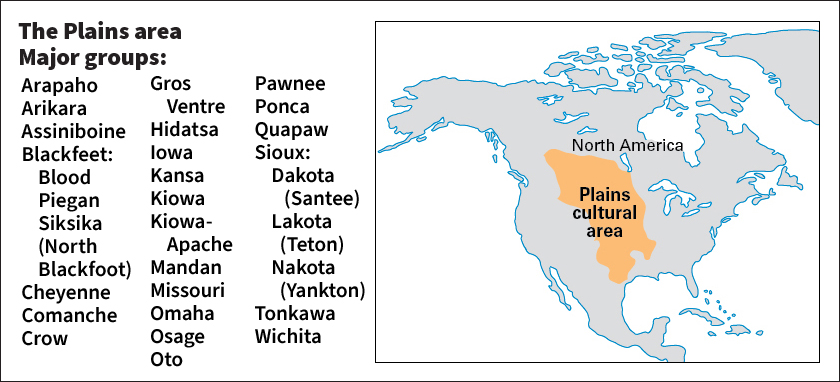Assiniboine << uh SIHN uh `boyn` >> are a large Plains tribe who live in parts of Canada and the United States. In Canada, they are recognized as a First Nations people, a designation used for Indigenous (native) groups. Before Europeans came to North America, the Assiniboine lived near Lake Superior in what is now Ontario. During the late 1600’s and the 1700’s, they moved to what became Saskatchewan, Montana, and North Dakota. The name Assiniboine probably comes from a Chippewa word that means one who cooks by the use of stones. They boiled soup by dropping hot stones into a pot. In Canada, they are often called Stonies.

The Assiniboine were a nomadic people who moved about following buffalo herds. They lived in tipis made of buffalo hides and wore buckskin clothing. The men hunted game, especially buffalo and antelope, and the women gathered berries, fruits, and plants to eat. The Assiniboine formed bands of related families who camped and hunted together. Each band was headed by a chief and a council of elders. The Assiniboine’s religion centered on the pursuit of visions and on a ceremony called the sun dance (see Sun dance). The Assiniboine believed visions brought help from the gods.
The Assiniboine were originally a division of the Sioux but separated from them before 1640. They then became allies of the Cree, who were enemies of the Sioux. During the late 1700’s and early 1800’s, smallpox wiped out nearly half the Assiniboine.
Today, a few thousand Assiniboine live on the Fort Peck and Fort Belknap reservations in Montana and on small reserves in Alberta and Saskatchewan. Each reservation or reserve is governed by an elected tribal council. Some Assiniboine are farmers or ranchers. Many members are poor and depend on economic aid from the government of the United States or Canada. Despite these problems, the people are proud of being Assiniboine, and many still speak their native language.
